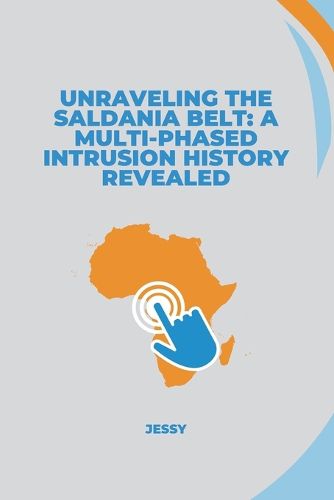Readings Newsletter
Become a Readings Member to make your shopping experience even easier.
Sign in or sign up for free!
You’re not far away from qualifying for FREE standard shipping within Australia
You’ve qualified for FREE standard shipping within Australia
The cart is loading…






The Saldania Belt in southern Africa, a product of the Pan-African Saldanian Orogeny, forms part of a system of Neoproterozoic mobile belts that border and weld older cratons on the African continent (Figure 5A). It is a low-grade orogenic belt situated along the south-western margin of the Kalahari Craton and is composed of a number of inliers of greenschist facies metasedimentary and metavolcanic rocks (Malmesbury Group), unroofed in mega-anticlinal hinges of the Permo-Triassic Cape Fold Belt (Gresse et al., 1992; Rozendaal et al., 1999). The Malmesbury Group and its main exposure to the north of Cape Town constitute the oldest rocks in the belt. They are divided into three tectono-stratigraphic terranes (Figure 6) by predominant northwest trending sinstral/dextral strike-slip fault and shear zones (Hartnady et al., 1974). Towards the east of the belt, several smaller exposures of supposed 'pre-Cape' rocks form part of the Saldania Belt. As previously mentioned, these are the: Gamtoos Group in the Port Elizabeth area, the Kaaimans Group in the George area and the Kango Group in the Oudtshoorn area. The folding and thrusting seen in the Saldania Belt was a result of the Permo-Triassic Cape Orogeny. This tectonism along with its weakly metamorphosed Neoproterozoic basement resulted in the overprinting of most of the earlier 'pre-Cape' structures and reset radiometric ages in the metamorphites (some granite as well) to 230-278 Ma (Halbich et al., 1983; Gresse and Scheepers, 1993).
$9.00 standard shipping within Australia
FREE standard shipping within Australia for orders over $100.00
Express & International shipping calculated at checkout
The Saldania Belt in southern Africa, a product of the Pan-African Saldanian Orogeny, forms part of a system of Neoproterozoic mobile belts that border and weld older cratons on the African continent (Figure 5A). It is a low-grade orogenic belt situated along the south-western margin of the Kalahari Craton and is composed of a number of inliers of greenschist facies metasedimentary and metavolcanic rocks (Malmesbury Group), unroofed in mega-anticlinal hinges of the Permo-Triassic Cape Fold Belt (Gresse et al., 1992; Rozendaal et al., 1999). The Malmesbury Group and its main exposure to the north of Cape Town constitute the oldest rocks in the belt. They are divided into three tectono-stratigraphic terranes (Figure 6) by predominant northwest trending sinstral/dextral strike-slip fault and shear zones (Hartnady et al., 1974). Towards the east of the belt, several smaller exposures of supposed 'pre-Cape' rocks form part of the Saldania Belt. As previously mentioned, these are the: Gamtoos Group in the Port Elizabeth area, the Kaaimans Group in the George area and the Kango Group in the Oudtshoorn area. The folding and thrusting seen in the Saldania Belt was a result of the Permo-Triassic Cape Orogeny. This tectonism along with its weakly metamorphosed Neoproterozoic basement resulted in the overprinting of most of the earlier 'pre-Cape' structures and reset radiometric ages in the metamorphites (some granite as well) to 230-278 Ma (Halbich et al., 1983; Gresse and Scheepers, 1993).